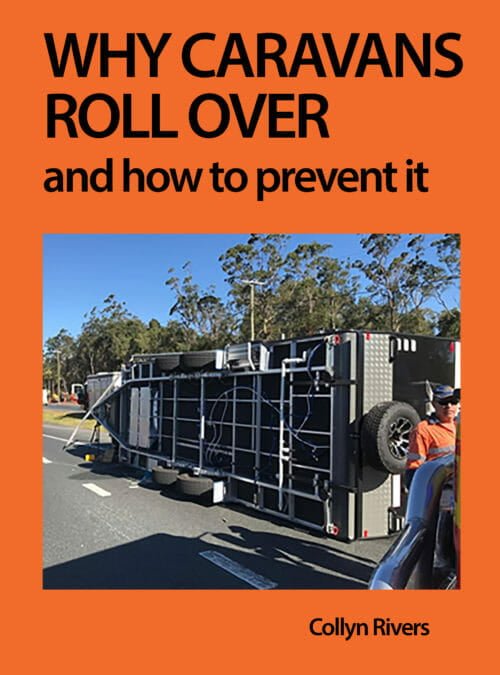A weight distributing hitch is not needed if the laden weight of the tow vehicle is equal to or exceeds that of the laden travel trailer. Nor is a weight distributing hitch needed for any trailer under about 4 metres.
Caravan/Tow Vehicle Behaviour & Suspension
Travel trailer suspension – it is mostly misunderstood
Travel trailer suspension has requirements that are very different from tow vehicles. This is only too often misunderstood. Here’s why and what it should be.
Motorhome and trailer tyres
Travel trailer and motor home tyres take a far greater beating than those in general use – an industry report noted that such tyres are subject to major abuse greater than any other form of use. In particular, stated the report, travel trailer and motor home tyres are often grossly under-inflated and overloaded.
Weight Distribution Hitch limits cornering
Tow ball weight pushes down the rear of the tow vehicle – thereby increasing the weight on its rear tyres. A WDH, in effect, is a semi-flexible springy beam that levers back up the rear of the tow vehicle and levers down its front. In doing so, however, it reduces the imposed load on the tow vehicles rear tyres and partially restored it on its front tyres. Reducing the load on the tow vehicle’s rear tyres reduces their ‘cornering ability’. This is why a weight distributing hitch limits cornering.
Trailer Dynamics Simply Explained
That travel trailers roll-over yet most vehicles don’t show trailer dynamics is not understood or is ignored. Trailer dynamics simply explained tells why. The main cause is that hitch extending from the tow vehicle’s rear. It not only allows but causes both tow vehicle and travel trailer to sway (yaw). Worse – if one yaw’s clockwise it causes the other to sway anti-clockwise. The further the tow ball behind the tow vehicle’s rear axle, the greater that effect.
Is Travel trailer Independent Suspension Essential? – the answer is no.
Do travel trailers need independent suspension is a marketing rather than an engineering issue. This article explains why travel trailer beam axles are generally better.
Travel trailer wheel placement
A conventional travel trailer must always be a compromise. This is because it is towed via hitch at some distance behind the tow vehicle’s rear wheels. If that vehicle sways clockwise, that hitch overhang causes (not just permits) the travel trailer to sway anti-clockwise. If the travel trailer sways clockwise, it causes the tow vehicle to sway anticlockwise. is essentially an unstable concept but safe within limits.
Travel trailer weight safe to tow – depends on what tows it
The maximum travel trailer weight safe to tow depends on what tows it. This article by Collyn Rivers explains why – and how to know what it is.
Need for a WDH – avoid using one if possible
Long end-heavy travel trailers have a need for a Weight Distributing Hitch (WDH). For all, though, it inherently reduces tow vehicle stability. Here’s how and why.
Weight distribution hitch setup – how much correction is needed
Correct weight distribution hitch setting up compensates travel trailer tow vehicle front end lift but introduces instability if too tight. Here’s why.




